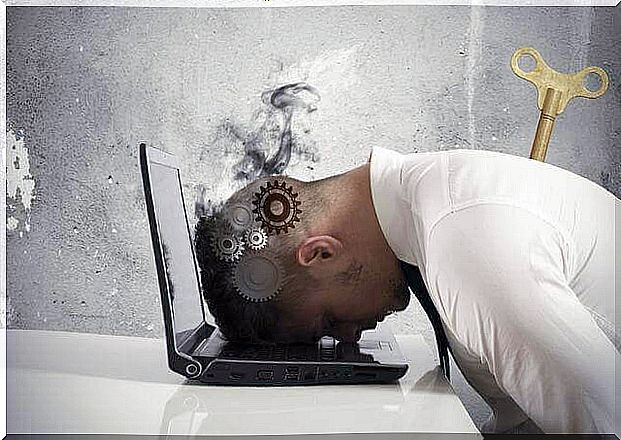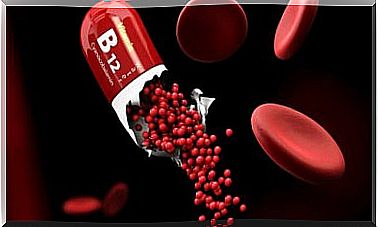Burnout, Or The Tendency To Kill Yourself At Work

Burnout results in a feeling of ill-being produced by too much work-related effort. Generally, this discomfort is the direct consequence of a very intense stress and / or prolonged in time, so that we end up being completely overwhelmed by this pressure (the psychological defenses are weakened) and that one does not feel capable of facing it. In addition, the incidence of burnout is higher among doctors, nurses, psychologists, in short; in people in positions that involve support or assistance.
Burnout can manifest itself in different ways in different people; in this sense, one of the most visible symptoms would be demotivation, causing a drop in the quality as well as the quantity of the assistance provided. However, we could also say that burnout is a state of physical, emotional and mental exhaustion produced by perpetual over-involvement in emotionally very demanding situations.
Maslash, one of the most important authors in this field, defines burnout as a syndrome characterized by “emotional fatigue which leads to loss of motivation and which generally gives rise to feelings of inadequacy and failure”.

The three axes around which the burnout syndrome revolves would be:
- Fatigue and emotional exhaustion: people affected by this syndrome feel that they are not able to provide more help or more quality support to the patient or the loved one they have in front of them, which, often, it makes them feel helpless. The professional cannot give more of himself to others, and feels tired psychologically, and often physically as well.
- Depersonalization in the treatment: because of the previous process, the professional is indifferent. He marks a greater distance between himself and the patient or loved one, so that he does not perform his work as he should or as he would under normal conditions.
- Feelings of failure due to a lack of personal and / or professional development: work gradually becomes less and less a source of satisfaction, and the professional begins to feel overwhelmed by feelings of failure. Burnout is characterized by frustration – the helplessness we talked about earlier -, low self-esteem and disillusionment with professional successes.
It is a chain or a process that feeds back, so that it does not have to follow the same order in all professionals and that its evolution is not always gradual. On the other hand, what on the other hand generally presents itself is “an escalation of the symptomatology”; the appearance of the first symptom triggers the appearance of the following ones.
This does not mean that all professionals involved in support networks as well as those in the workplace who see death or illness up close should wear out. There are professionals who, before tackling tasks as difficult as palliative care or oncology, strengthen themselves. The way in which they will deal with the difficulty depends on a lot of the resources of confrontation, as well as on the regulation that the person makes of his own emotions.
There are certain elements (experiences, people, situations, etc.) that we cannot change or over which we do not have absolute control. Events which are as they are. Events which we would have liked to have been otherwise, which seem unfair to us, which should not exist.
Yet… they are like that, and there is nothing we can do about it. In this sense, in order to be able to take care of ourselves, it is preferable to differentiate between what we can and what we cannot do; between what is, and what should be. It will protect us from helplessness, frustration, guilt and anger.
It is important to accept that:
- We are responsible for what we do, not guilty. We can always choose our way of reacting to what has happened.
- We have limits and we need to take care of our relationships, whether it is the relationship we maintain with ourselves or the one we maintain with others.
- Pain and suffering affect us: it is normal and human. This will help us find out more about ourselves.
- Emotions have their own rules and are difficult to submit to the dictates of reason. This is so, even if you are a healthcare professional.

To treat burnout, generally, two psychological remedies are used with very powerful therapeutic effects. We are talking to you here about acceptance and compassion. Both attempt to release us from tension and allow us to preserve motivation and willpower so that we can proactively use our energy. In this sense, proactivity consists in making decisions by oneself, of feeling responsible for what one does without justifying anything by an external factor.
In this way, acceptance and compassion allow us to set some goals that are real and within our grasp, and guide us so that we can ultimately achieve them. It’s about focusing on what you want, not what you fear. For that, it is important to seek the adequate information and to invest in a quality training. For example, practicing techniques like mindfulness, which is based on mindfulness focused on the present moment.
Self-regulatory processes are also of great importance in this area. When we talk about self-regulatory processes, we are referring to those strategies that allow us to control the conduct itself (emotional, cognitive and motor) in order to adapt to the situation, and to the circumstances that surround it. mark her.
Ultimately, the general approach that this highlights is simple: regain control over important personal choices (such as devoting oneself to helping others) that allow the chosen task to be performed in the most efficient manner and involving the emotional cost. as low as possible.










